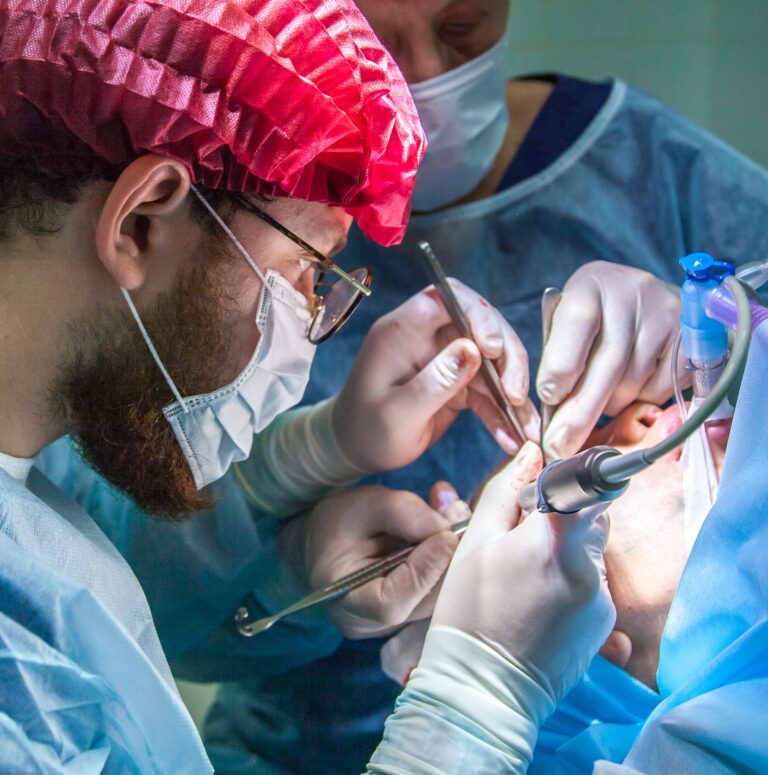The Shocking Truth About Not Wearing Your Glasses: The Devastating Consequences of Going Without
Patients with mild myopia may wonder if their eyesight will get worse if they have been not wearing prescription glasses. The answer to this question is not straightforward as it can vary depending on various factors such as age, genetics, and environmental factors. Let’s read the passage, and Alamode tells you the shocking truth now.

How Prescription Glasses Work
Prescription glasses work by correcting refractive errors in the eyes. Refractive errors occur when the shape of the eye prevents light from focusing properly on the retina, leading to blurry vision. Prescription glasses use lenses that are specifically designed to correct the refractive error and allow light to focus correctly on the retina.
The lenses in prescription glasses are made of different materials, such as glass or plastic, and can have different shapes and thicknesses depending on the degree of refractive error being corrected. The prescription for glasses is determined by an eye doctor through a comprehensive eye exam, which measures the degree of refractive error and other factors such as the shape of the cornea and the overall health of the eyes.
The prescription for glasses is written in terms of the lens power, which is measured in units called diopters. The lens power is determined by the distance between the lens and the retina, as well as the curvature of the lens. The lens power can be positive or negative, depending on whether the refractive error is hyperopia (farsightedness) or myopia (nearsightedness).
Prescription glasses can also be designed to correct other types of refractive errors, such as astigmatism, which occurs when the cornea is irregularly shaped. Astigmatism can be corrected with lenses that have different powers in different meridians, or directions.
Overall, prescription glasses work by using lenses that are specifically designed to correct refractive errors in the eyes, allowing light to focus properly on the retina and providing clear vision.

The Consequences of Not Wearing Prescription Glasses
Depending on the severity of the refractive error and the unique circumstances of the individual, the effects of not wearing prescription glasses can differ. But generally speaking, failing to wear prescription glasses when necessary can have a variety of detrimental effects.
l First off, not wearing glasses with a prescription can cause blurry vision, which can make it challenging to perform daily activities like reading, driving, or using a computer. This can be potentially dangerous as well as frustrating, especially when driving or using large machinery.
l Second, not wearing prescription glasses can make it harder for the eyes to focus and adjust to hazy vision, which can lead to headaches, fatigue, and eye strain. Particularly for those who spend a lot of time performing visually demanding tasks, this can result in discomfort and decreased productivity.
l Thirdly, the refractive error may worsen over time if you don’t wear your prescription glasses. Without corrective lenses, the eyes may learn to adjust to their blurry vision, which may change the shape of the cornea and result in a more serious refractive error. Further vision correction with glasses or contact lenses may be more challenging as a result.
l Last but not least, failing to utilize prescription eyeglasses may occasionally result in more severe eye issues like amblyopia (lazy eye), strabismus (crossed eyes), or even blindness in rare instances. When the eyes are not corrected during crucial stages of visual development, particularly in children, these conditions can arise.

How to Care for Your Eyesight
Taking good care of your eyesight is essential for maintaining healthy vision and preventing eye diseases. Here are some tips to help you care for your eyes:
l Visit an eye doctor regularly: Regularly visit an eye specialist It’s crucial to have your eyes checked by a licensed eye doctor at least once a year in order to identify early signs of eye diseases and vision issues.
l Protect your eyes from the sun: Sun protection is important because prolonged UV exposure raises the chance of cataracts and other eye conditions. Your eyes can be shielded from the sun’s harmful rays by wearing sunglasses that completely filter out UV rays.
l Rest your eyes: If you spend a lot of time looking at a computer or phone screen, take frequent breaks to rest your eyes. Look away from the screen every 20 minutes or so and focus on something in the distance to reduce eye strain.
l Eat a healthy diet: If you spend a lot of time staring at a computer or smartphone screen, take regular pauses to give your eyes a chance to rest. Every 20 to 30 minutes, look away from the screen and focus on something far away to reduce eye strain.
l Don’t smoke: Smoking is a well-known contributor to a number of health issues, such as different cancers, heart disease, and lung illnesses. Smoking, however, can also raise your chance of developing eye conditions.
l Keep your eyes clean: Good hygiene can help prevent eye infections. Be sure to wash your hands frequently, especially before touching your eyes or handling contact lenses.
l Wear protective eyewear: If you work with machinery or in hazardous environments, wear protective eyewear to prevent eye injuries.

Summary
In general, not wearing prescription glasses when you have myopia does not make the condition worse. However, it can lead to eye strain, headaches, and discomfort, especially when doing close work such as reading or using a computer for extended periods. This is because the eye has to work harder to focus on objects, which can cause the muscles to become fatigued.
Alamode devotes to being your eye expert. Come here, Alamode sincerely serves for all of you.



